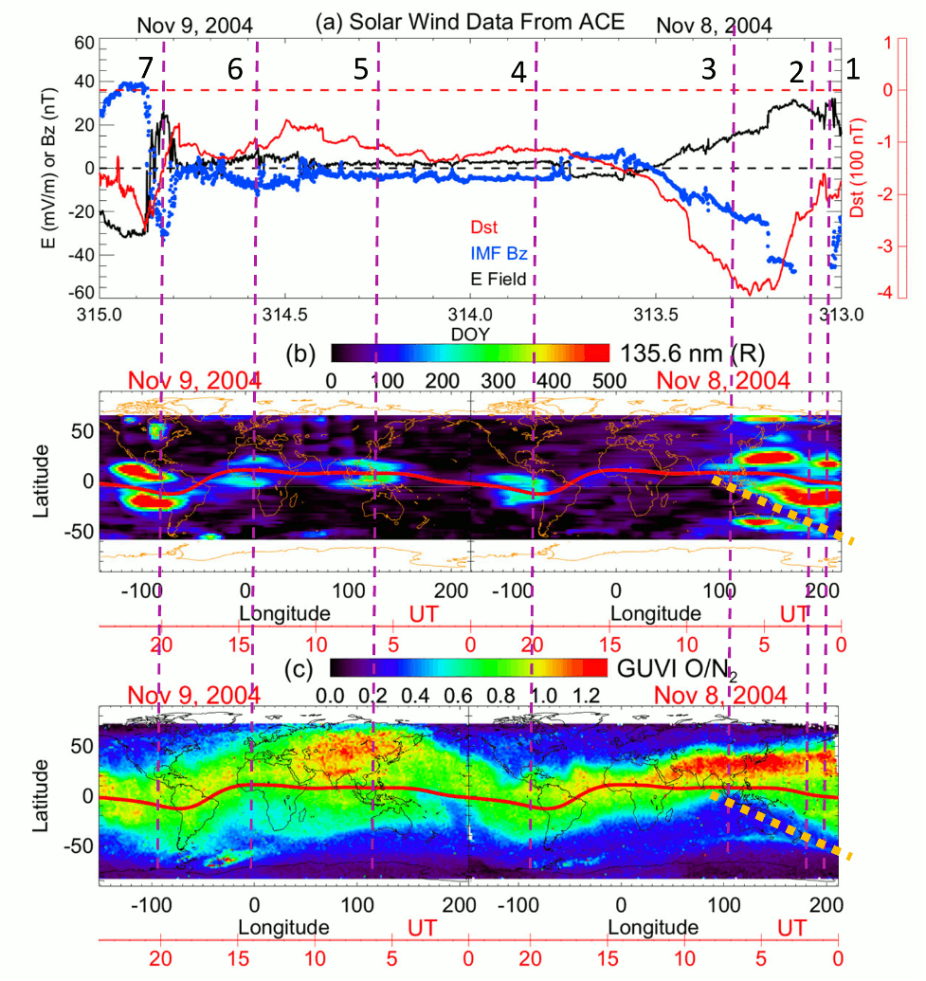
(a) Dst (red line), near Earth interplanetary electric field (black line) and IMF Bz (blue dots) from ACE, (b) GUVI dayside 135.6 nm radiance at the topside limb pixel (~520 km altitude), (c) GUVI O/N2 column density ratio on November 8 and 9, 2004. Note UT goes from right to left. The solid red line in (b) and (c) represents the magnetic equator.
The 135.6 nm emissions at ~520 km from TIMED/GUVI top limb pixels are mainly due to the O+ and electron radiative recombination and represent the daytime ionosphere density at the altitude. The 135.6 nm radiances clearly showed a signature of ionospheric equatorial arcs and their variations during the November 2004 magnetic superstorm. When an intense eastward Interplanetary Electric Field (IEF) occurred, the dayside equatorial arcs were enhanced and their latitude separation increased. The enhanced equatorial arcs were hemispherically symmetric or asymmetric in the region with non-depleted O/N2 or hemispherically asymmetric O/N2 depletion, respectively. When O/N2 depletion reached the magnetic equator, there was no observable enhancement in the equatorial arcs regardless the IEF conditions, indicating O/N2 condition significantly modulated the variations in storm-time equatorial arcs. GUVI observations also showed that a westward IEF and/or disturbance dynamo electric field could also suppress the dayside equatorial arcs.
Zhang, Y., Paxton, L., Huang, C., and Wang, W. (2022). FUV Observations of Variations in Thermospheric Composition and Topside Ionospheric Density During the November 2004 Magnetic Superstorm. J. Atmos. Solar–Terr. Phys., 228 (2022), 105832. DOI: 10.1016/j.jastp.2022.105832.